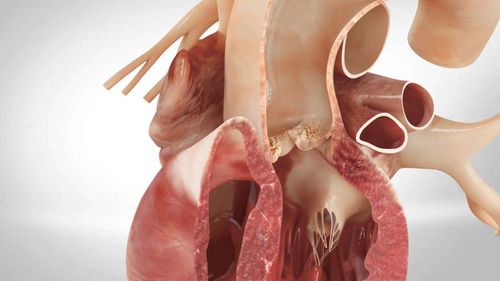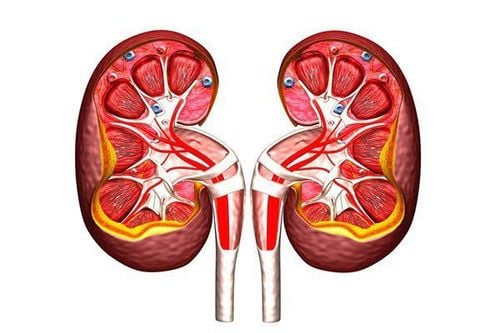This is an automatically translated article.
The article was professionally consulted by MSc Vu Thi Tuyet Mai - Cardiologist, Vinmec Central Park International General Hospital.Hypertension is a common clinical picture, and an important risk factor for coronary heart disease. Hypertensive episodes, also known as severe hypertension, a rapid rise in blood pressure from normal levels, may occur in 1% of patients with chronic hypertension. There are two clinical types: acute hypertensive crisis, often accompanied by target organ damage, and hypertensive urgency.
1. Acute hypertensive crisis
A hypertensive emergency is severe hypertension (systolic blood pressure ≥ 180 mmHg, and/or diastolic blood pressure ≥ 120 mmHg, with new or worsening target organ damage). annual > 79% and median survival of 10.4 months if severe hypertension is not treatedHypertensive emergency often requires rapid BP control in 1-2 hours to avoid further damage The following typical clinical presentations may be encountered:
Malignant hypertension: Very high blood pressure, diastolic BP ≥ 120 or 130 mmHg, with fundus lesions, progressive renal failure development, coagulopathy, hypertensive encephalopathy, acute heart failure, if not treated promptly, the prognosis is very poor Severe hypertension is associated with a complex clinical picture requiring hypotension Urgent pressure such as: aortic dissection aneurysm, acute myocardial infarction, acute pulmonary edema, cerebral hemorrhage. other attached. Hypertension in the setting of eclampsia or severe pre-eclampsia Clinical symptoms depend on which target organ is affected, but are common: Headache, visual disturbances, chest pain, dyspnea, dizziness, convulsions convulsions, coma.
2. Urgent rise in blood pressure

Although the patient's blood pressure increases significantly, with hypertensive urgency rarely causes acute complications. Severe hypertension has been progressing for many years. Urgent treatment of hypertension is usually oral medication and gradual lowering of blood pressure over 24-48 hours.
It is important not to use drugs that cause sudden, drastic hypotension that can cause significant damage by hypoperfusion. In clinical practice, the use of sublingual nifedine to lower blood pressure in acutely high blood pressure is no longer recommended because of the potential for rapid, severe hypotension.
3. Emergency treatment of hypertension
The goal of hypertensive emergency treatment should be to lower mean arterial pressure by 25% in the first 1-2 hours, and maintain systolic blood pressure of about 160 mmHg/diastolic BP of 100-110 mmHg for 2-6 hours. and BP returns to normal after 24-48 hours, depending on the clinical situation. Hypotension to normal ≤ 120 mmHg may be permitted in the case of aortic dissection. In the case of severe preeclampsia or eclampsia, hypertensive crisis due to hyperadrenocorticism should reduce systolic BP to <140 mmHg.However, a rapid decrease in blood pressure to normal values may be excessive in patients with chronic hypertension. This explains the phenomenon of ischemia of important organs and the appearance of kidney failure and cerebral ischemia when blood pressure is lowered too quickly and too much.
Identification of target organ damage, and specific therapeutic interventions other than blood pressure lowering, aggravating factors of hypertension such as pain, anxiety, use of stimulant drugs such as amphetamines , cocaine..is essential.
In addition, patients with hypertensive emergency in addition to needing immediate treatment also need to diagnose and find the cause of high blood pressure. Depending on the population, it is found that about 20% to 50% of hypertensive emergency patients have a secondary cause of hypertension.
The ideal drug for the treatment of hypertension is to have rapid onset, strong potency, rapid recovery, no tachycardia, few side effects.

In short, hypertensive emergency is a condition that requires immediate lowering of blood pressure and the use of drugs. in accordance with each clinical situation, as prescribed by the doctor, to minimize serious and life-threatening complications.
Currently, Vinmec Central Park International General Hospital is implementing packages of hypertension examination from basic to advanced. With a system of modern facilities, equipped with state-of-the-art equipment, on par with the world's leading cardiovascular hospitals, with a team of experts who are professors, doctors, and cardiologists. leading circuit in the country, not only highly specialized but also always devoted and wholeheartedly for patients. When having a cardiovascular examination at Vinmec Central Park, customers will receive comprehensive and professional examination, consultation and treatment services, bringing the highest treatment efficiency and satisfaction.
Please dial HOTLINE for more information or register for an appointment HERE. Download MyVinmec app to make appointments faster and to manage your bookings easily.
Article referenced source: Vietnam Cardiology Association













